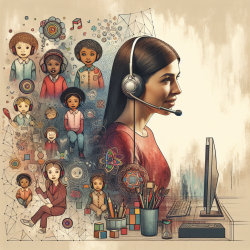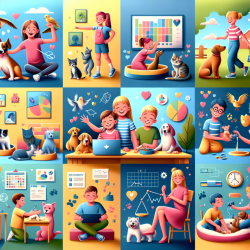Unlocking Youth Perceptions Through Drawings: A Practitioner’s Guide
In the ever-evolving field of child development, understanding how children perceive themselves is crucial. A recent study, Youth perception of self and ideal self through drawings: association between perception and weight status, offers valuable insights into how children view their current and ideal selves through drawings. This research provides a unique, non-invasive method to assess youths' body image perceptions, which can significantly impact their mental and physical health outcomes.
Key Findings from the Study
The study involved 90 participants aged 6-17, who were asked to draw themselves as they currently see themselves ("Me") and how they would ideally like to appear ("Preferred Me"). The results revealed a strong correlation between the size of the drawings and the participants' weight status. Specifically, the dimensions of height, waist, and width in the drawings were linked to the participants' actual body measurements.
Interestingly, the study found that the emotions depicted in the drawings were also associated with the participants' weight. This suggests that children’s drawings can provide deep insights into their self-perception and emotional state, offering a valuable tool for practitioners in educational, medical, and psychological settings.
Implementing the Findings in Practice
For practitioners working with children, incorporating drawing tasks into assessments can be a powerful tool. Here’s how you can implement these findings:
- Use Drawings as a Diagnostic Tool: Encourage children to draw themselves as they see themselves and as they would like to be. Analyze these drawings to gain insights into their self-perception and emotional well-being.
- Monitor Changes Over Time: By regularly asking children to complete these drawing tasks, you can track changes in their self-perception and identify any emerging issues related to body image or self-esteem.
- Customize Interventions: Use the insights gained from the drawings to tailor interventions that address specific issues related to body image, self-esteem, and emotional well-being.
- Encourage Open Discussions: Use the drawings as a starting point for discussions with children about their self-image and feelings, fostering a supportive environment where they feel comfortable expressing themselves.
Encouraging Further Research
While this study provides valuable insights, it also highlights the need for further research. Practitioners are encouraged to explore the following areas:
- Longitudinal Studies: Conduct long-term studies to observe how children's self-perceptions evolve over time and how these changes relate to their physical and emotional development.
- Cross-Cultural Comparisons: Investigate how cultural factors influence children's self-perceptions and drawing representations.
- Integration with Other Assessment Tools: Combine drawing analysis with other assessment methods to provide a more comprehensive understanding of children's self-perception and mental health.
By embracing these research opportunities, practitioners can enhance their understanding of youth self-perception and improve outcomes for children facing challenges related to body image and self-esteem.
To read the original research paper, please follow this link: Youth perception of self and ideal self through drawings: association between perception and weight status.










